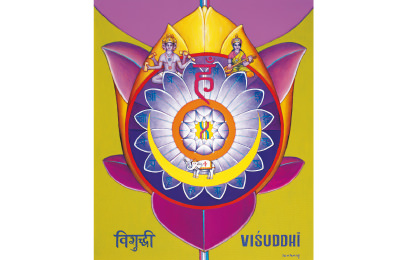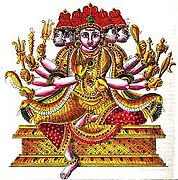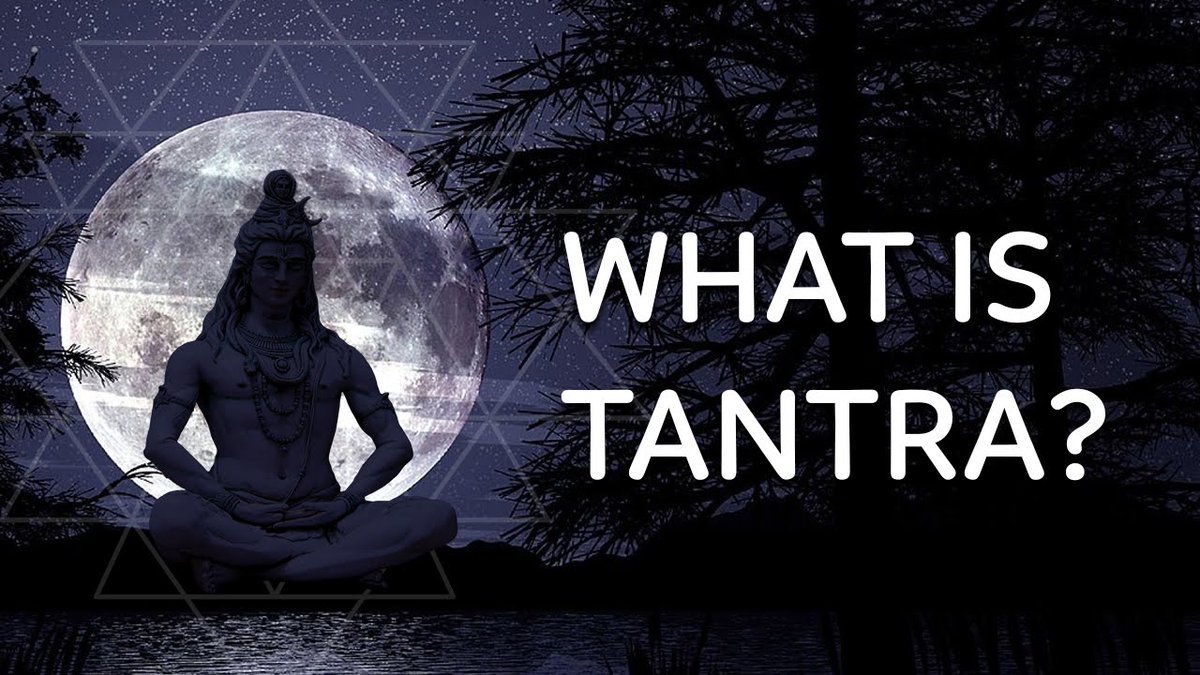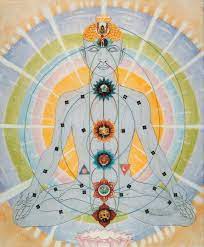Chakra 5 Vishuddhi
#Yoga #Kundalini #spirituality
Vishuddhi chakra is 'purification center'. Sanskrit word shuddhi means to purify; in this chakra the purifying a harmonizing of all opposites takes place. Vishuddhi is also known as 'nectar & poison center'.
#Yoga #Kundalini
#Yoga #Kundalini #spirituality
Vishuddhi chakra is 'purification center'. Sanskrit word shuddhi means to purify; in this chakra the purifying a harmonizing of all opposites takes place. Vishuddhi is also known as 'nectar & poison center'.
#Yoga #Kundalini

Here, the nectar which drips down from bindu is said to be split into the pure form and the poison. The poison is discarded and the pure nectar then nourishes the body, ensuring excellent health and longevity.
#Yoga #Kundalini #spirituality
#Yoga #Kundalini #spirituality

Vishuddhi represents a state of openness in which life is regarded as the provider of experiences that lead to greater understanding. One ceases to continually avoid the unpleasant aspects of life and seek the pleasant. #Yoga #Kundalini #spirituality 

Instead there is a flowing with life, allowing things to happen in the way that they must. Both poison and nectar are consumed in Vishuddhi Chakra, and they are understood to be but parts of a greater cosmic whole.
#Yoga #Kundalini #spirituality
#Yoga #Kundalini #spirituality

Proper understanding & true discrimination drawn out of this equal acceptance of dualities & polarities of life. More abstract aspect of vishuddhi is higher discrimination. Thus any communication received telepathically can be tested here for correctness.
#Yoga #Kundalini
#Yoga #Kundalini

Similarly, vishuddhi allows us to differentiate between realization coming into our consciousness from the higher levels of knowledge, and the mere babblings of our unconscious mind and wishful thinking.
#Yoga #Kundalini #spirituality
#Yoga #Kundalini #spirituality

Vishuddhi chakra is often treated as an insignificant chakra in the scheme of kundalini yoga. People are more concerned with mooladhara, anahata and ajna, and therefore the significance of vishuddhi is easily disregarded.
#Yoga #Kundalini #spirituality
#Yoga #Kundalini #spirituality

In fact, the reverse attitude may even be more appropriate. The location point Vishuddhi chakra is in the cervical plexus directly behind the throat pit. Its kshetram is in the front of the neck, at the throat pit or thyroid gland.
#Yoga #Kundalini #spirituality
#Yoga #Kundalini #spirituality

Physiological concomitants of vishuddhi are pharyngeal & laryngeal nerve plexi. Tantric texts say vishuddhi chakra is represented by a dark grey colored lotus, however, it seems to be more commonly perceived as a purple lotus of sixteen petals.
#Yoga #Kundalini #spirituality
#Yoga #Kundalini #spirituality

These sixteen petals correspond to the number of nadis associated with this center. On each petal one of the Sanskrit vowels is inscribed in crimson - am, aam, im, eem, um, ооm, rim, reem, lrim, lreem, em, aim, om, aum, am, ah.
#Yoga #Kundalini #spirituality
#Yoga #Kundalini #spirituality

In the pericarp of this lotus is a circle which is white like the full moon, representing the element of ether or akasha. This ethereal region is the gateway to liberation for one whose senses are pure and controlled.
#Yoga #Kundalini #spirituality
#Yoga #Kundalini #spirituality

In the moon is a snow white elephant, symbolic of akasha element. This is seen as vehicle of consciousness of this plane, aspirant may picture himself on its back. Bija mantra is ham, pure white, which is seed sound or vibration of etheric element.
#Yoga #Kundalini #spirituality
#Yoga #Kundalini #spirituality

The presiding deity of vishuddhi is Sadashiva, who is snow white, three-eyed and five-faced, with ten arms and clothed in a tiger's skin. The goddess is Sakini who is purer than the ocean of nectar that flows down from the moon region.
#Yoga #Kundalini #spirituality
#Yoga #Kundalini #spirituality

Her raiment is yellow; in her hands she holds bow, arrow, noose & goad. Vishuddhi belongs to 5th loka, plane of janaha. Its vayu is udana that lasts till end of life & rises upwards; with ajna, it is basis for vigyanamaya kosha that starts psychic development.
#Yoga #Kundalini
#Yoga #Kundalini

The tanmatra or sense is hearing and the gyanendriya or organ of knowledge is the ears. The karmendriya or organ of action is the vocal chords.
#Yoga #Kundalini #spirituality
#Yoga #Kundalini #spirituality

In nada yoga, the branch of kundalini yoga concerned with sound vibration, vishuddhi and mooladhara are considered to be the two basic centers of vibration.
#Yoga #Kundalini #spirituality
#Yoga #Kundalini #spirituality

• • •
Missing some Tweet in this thread? You can try to
force a refresh
























